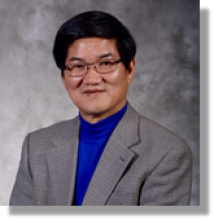MSE 298 Seminar (Zoom): Simulation-Guided Discovery and Design of Mesoscale Structures for Optimum and Novel Properties

Professor
Department of Materials Science and Engineering
Department of Engineering Science and Mechanics, and Mathematics
Penn State University
Zoom Link: https://uci.zoom.us/j/93523874547?pwd=bXRGd3BwMFJWSHY3WGZDaGRucCt0dz09, meeting ID 935 2387 4547, passcode 740726
Abstract: Materials research is largely concerned with the study and manipulation of the spatial and temporal evolution of structural, magnetic, electric polarization and chemical domains in a material as well as their responses to external stimuli. One of the powerful computational techniques to model the mesoscale microstructures is the phase-field method. However, the majority of the existing applications of the phase-field method have been focused on modeling, reproducing and understanding the evolution of experimentally observed materials microstructures during processing and in-service conditions or to test analytical theories. This presentation will discuss a few examples of our recent attempts to employ the phase-field method to not only interpret and understand experimentally observed ferroic domain patterns but also provide guidance to experimental synthesis and characterization to discover new mesoscale domain states of ferroic materials or achieve dramatically enhanced properties. These include the computation-guided discovery of polar vortex lattices, skyrmions, and unusual negative capacitances in ferroelectric superlattices, design of record-high piezoelectricity in ferroelectric relaxor ceramics and single crystals, and the discovery of simultaneous near-perfect light transparency and ultrahigh piezoelectricity through AC poling.
Bio: Chen is a Hamer Professor of Materials Science and Engineering, professor of engineering science and mechanics, and professor of mathematics at Penn State. He is the editor-in-chief for npj Computational Materials by Nature Portfolio. He received his Ph.D. from MIT in 1990, M.S. from Stony Brook University, and B.S. from Zhejiang University, and joined the faculty at Penn State in 1992. He has published over 750 papers in the area of computational microstructure evolution of structural metallic alloys, functional oxide thin films, and energy materials and is a Clarivate Analytics Highly Cited Researcher. His awards includes MRS Materials Theory Award, Guggenheim Fellowship, Humboldt Research Award, TMS EMPMD Distinguished Scientist Award, ACerS Ross Coffin Purdy Award and ASM Silver Medal. He is a fellow of MRS, APS, AAAS, ACerS and ASM.
Share
Related Content
| Attachment | Size |
|---|---|
| 341.14 KB |
Upcoming Events
-
MSE 298 SEMINAR: Metallurgy, Microstructure and Academia from the Perspective of a Postdoctoral Researcher
-
2025 SoCal CEE Research Symposium
-
MSE 298 SEMINAR: Toward Predictive Materials Synthesis with Atomistic Simulations and Robust Machine Learning
-
CBE 298 Seminar: Physical Biology Strategies for Translational Bioelectrical Interfaces
-
MSE 298 SEMINAR: Grain Boundary Engineering in Nanoceramics
